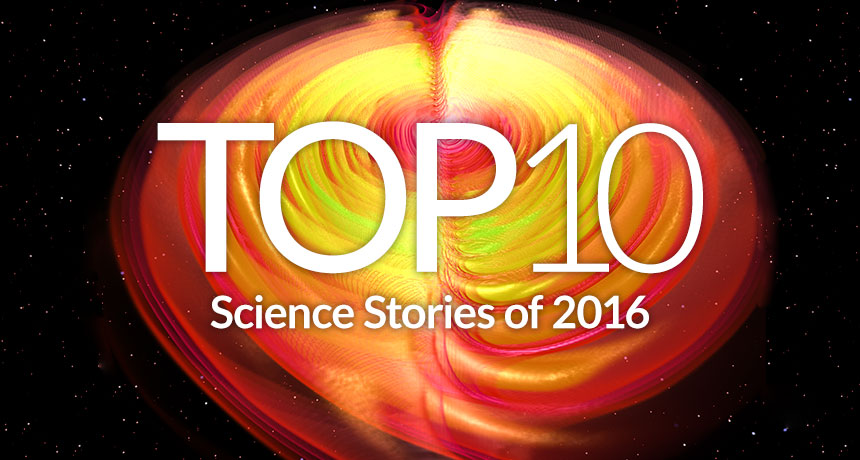Top 10 science stories of 2016: Gravitational waves, Zika, Proxima b and more

At first glance, the stories taking the top two spots in Science News’ review of 2016 have little in common. Scientists began searching decades ago for gravitational waves. Discussions of these subtle signals from dramatic and distant phenomena appear dozens of times in the SN archive starting as early as the 1950s. Their long-awaited discovery, our No. 1 story of the year, touched off celebration of a new era in astronomy.
Less expected, and far from subtle, was the sudden rise in Brazil of microcephaly cases, linked this year to Zika virus infections — our No. 2 story. Little was known about Zika before the outbreak, which delivered devastation and fear across the Americas. In fact, only a single previous mention of Zika exists in the SN archive, in a book review from the 1990s.
But the stories have at least one thing in common: Both highlight the power of scientific discoveries to trigger our deepest human emotions. Pure elation as well as overwhelming dread can accompany research advances.
2016 brought many more sentiments, too. There was enthusiasm for the discovery of the exoplanet Proxima b, concern for the prospects of three-parent babies and feelings of potential but also impending peril in the openings of Arctic passageways.
The editors and writers at Science News also recognize that some of the best and most moving stories are those that are still unfolding. So, in addition to the discoveries of 2016, we review milestones, setbacks and other tales of unsteady progress. Sonia Shah writes about a new wave of infectious diseases; Tom Siegfried explores convergent failures in the field of particle physics; and Laurel Hamers covers key challenges for self-driving cars. Then, Science News writers share what science news they’re most excited about in the year to come. — Elizabeth Quill